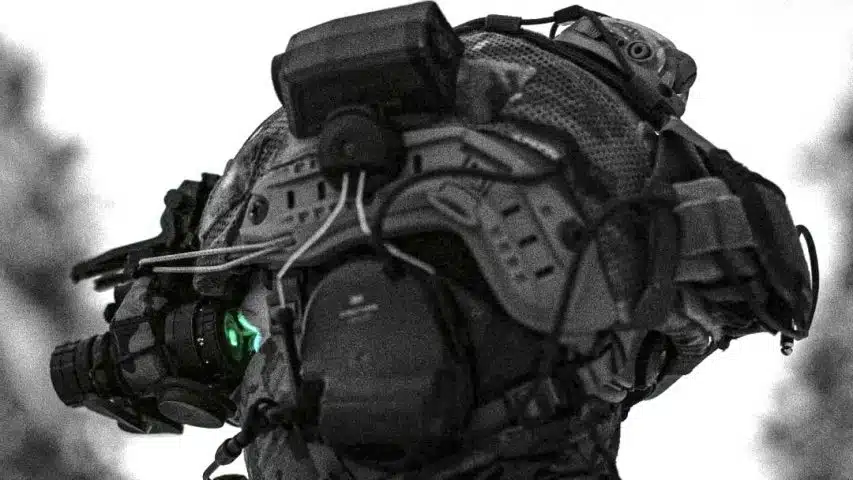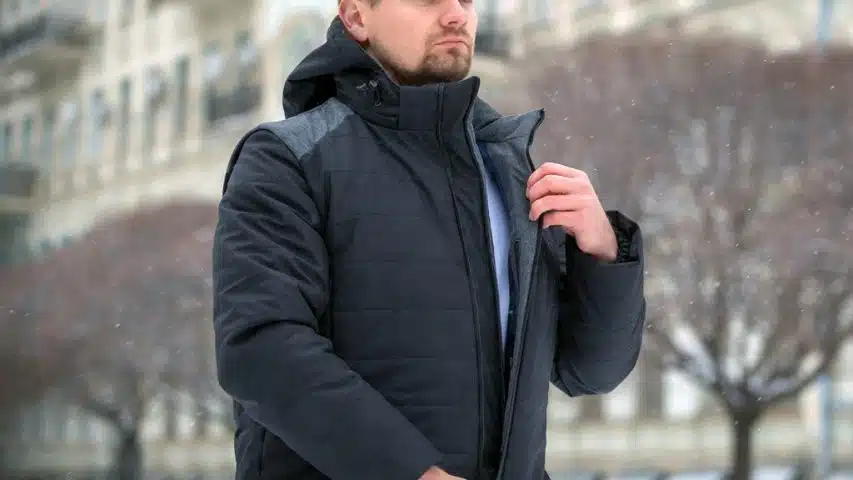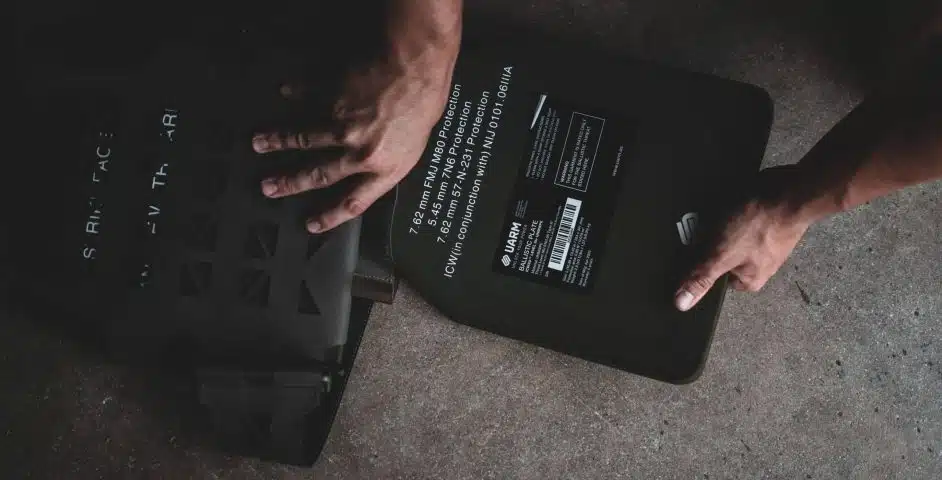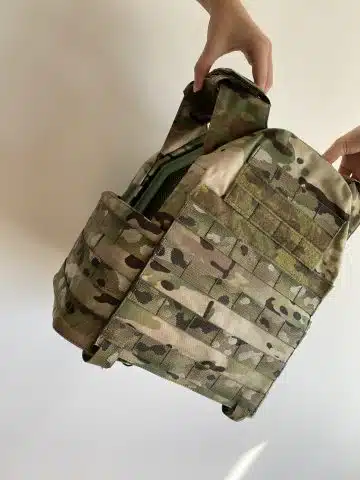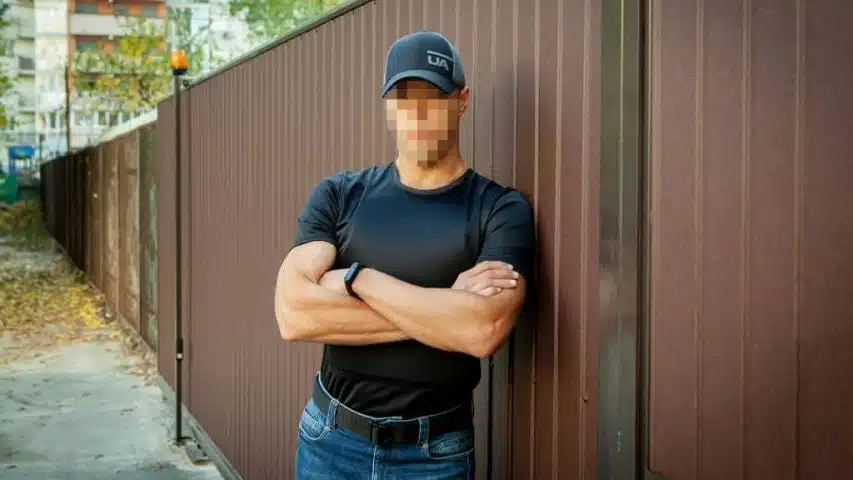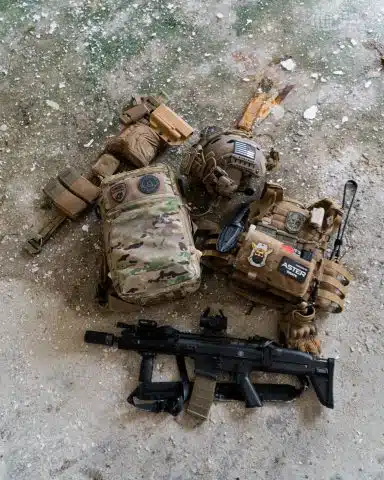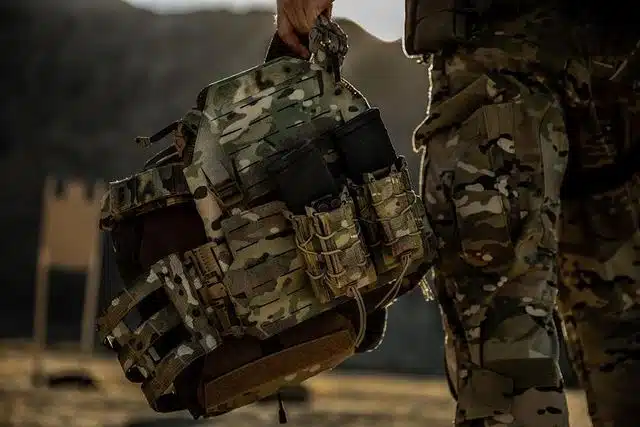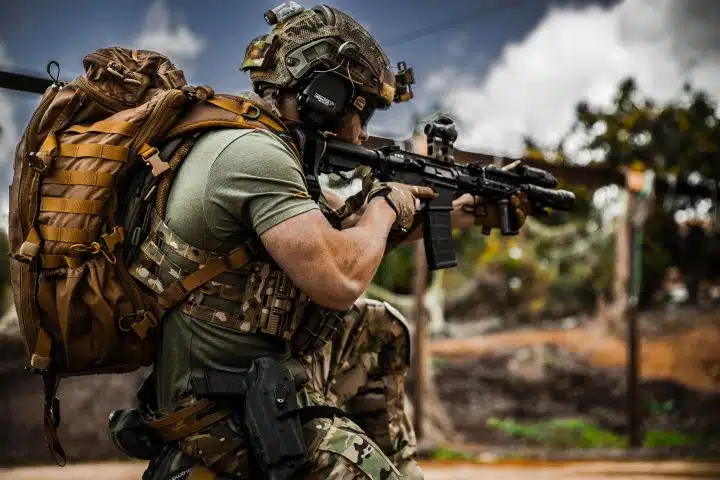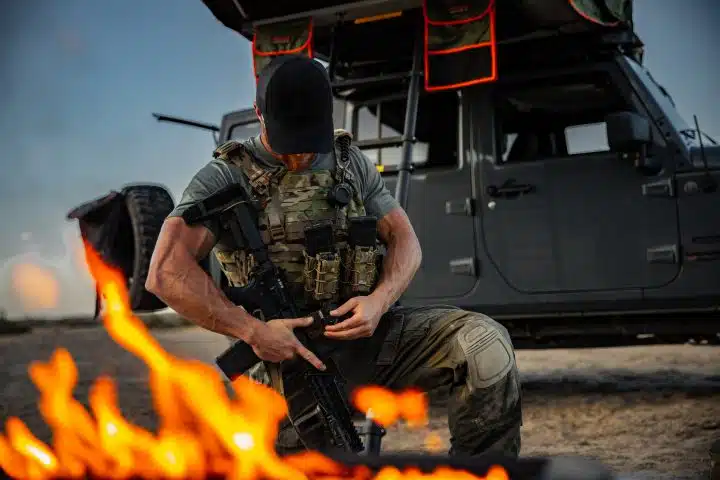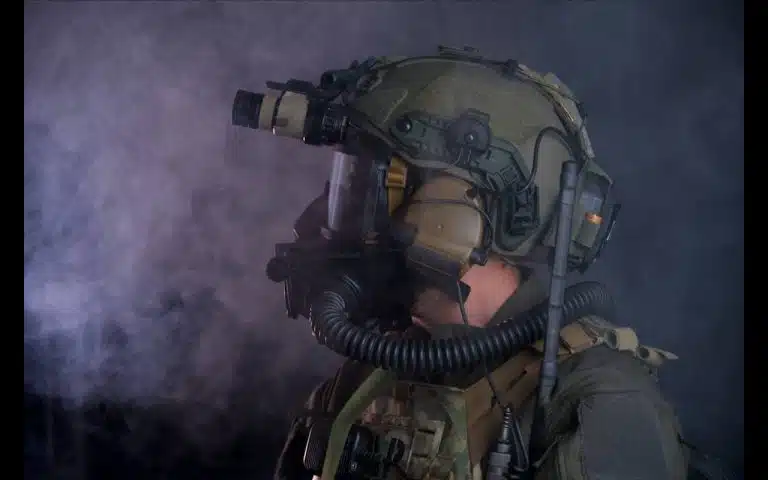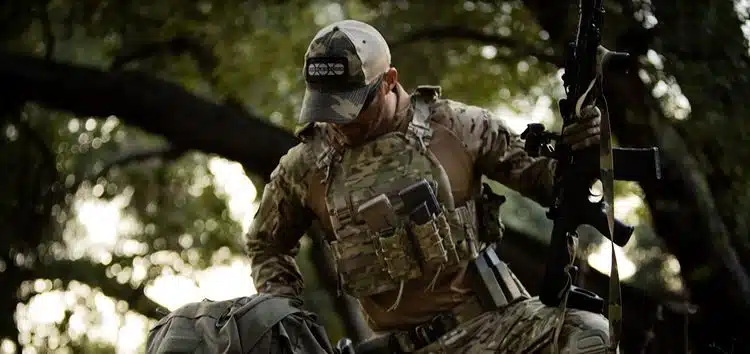Although at first glance it might seem that the difference between concealable and overt body armor is just in the way you wear it, the truth goes much deeper. Not only will you need to consider weight, protection, and mobility, but also how other people will perceive you.
While in most cases you won’t be bothered with aesthetics alone, there are some cases where this part is crucial. In some missions, it will be paramount that you stay out of sight and only strike in an opportune time. Other times, a clear show of force and preparedness may prevent any conflict from arising at all.
There are five major differences between these types of armor:
- Perception
- Design
- Protection
- Mobility
- Utility
Additionally, there may be some other minor factors that would be significant for your particular mission or type of job. It will always be up to you to answer the demands of the task at hand with adequate gear.
Thankfully, advances in technology have allowed us to mix and match different aspects of various types of gear. This will allow almost everyone to find high-quality body armor that they will use for years.
Clear Visual Differences
While hypothetically you may wear your soft inner bulletproof vest over your clothes and your external carrier under a large jacket, that is not what they are meant to do.
Wearing concealable armor on the outside wastes its main purpose and makes the rest of the clothes uncomfortable. And, unless you want to look completely comical, you don’t want to wear an external bulletproof vest under a jacket. Even with the increasing levels of obesity in this country, you will still look odd.
This has little to do with fashion, but practicality. Picking out the right body armor for the job will make the whole experience more comfortable. And, when you find it easier to move you will be more agile and tire more slowly.
Used as a Base Layer
There are under-armor shirts that can be worn under concealed body armor. But, with modern materials that allow your skin to breathe that is not always necessary. In warmer conditions, you may opt to go with only the armor as your base layer.
Even a simple work-shirt will do over such armor, as it is very thin. It might look like you have a buffed up chest, but when was that ever a bad thing?

Ideally, you would want some looser clothes to hide any fact that you are protected. This way people around you will be at ease and any potential attacker will be none the wiser.
Showing Preparedness and Intent
With external carriers and overt body armor in general, it is always better to go all-in when you are already invested. Be sure to wear good and sturdy armor and to take all of the additional gear these types of armor can take.
The same way a perpetrator’s ignorance of your defenses can work in your favor, so can their fear. Seeing you as too big of a threat can dissuade a potential attacker from even trying something. And, as always, the best battle is one won without fighting.

Wearing such armor will also give you better access to your gear. As you are already wearing overt armor, there is no need to pass on a good utility belt and well as a MOLLE attachment with PALS gear.
Hiding in Plain Sight
Finally, there is body armor that is made to look like casual clothes. This is good armor with the same protective capabilities as other soft models but in novel design.
In the summertime, you will be bound to wear armored shirts that are disguised to look like regular T-shirts or singlets. Now, wearing only a wife-beater in public might raise some eyebrows, but even if you wear an open shirt on top you will look really casual.

Once winter comes, and winter is coming, you will have a lot of other options. There are armored hoodies that look exactly like a nice, plain hoodie. The weight, in this case, makes the apparel even more comfortable.
Also, there are puffer vests and jackets that look fashionable and where nobody would ever guess that your jacket can stop a .44cal Magnum bullet.
The Difference between Concealable and Overt Body Armor in Protection
On its own, it doesn’t change the level of protection of the vest if you wear it beneath or over your clothes. But, you can’t (comfortably) wear plates under your shirt, and if you already have an external carrier you will want at least pockets for hard plates.
Concealed vests usually come in NIJ Levels IIa, II, and IIIa in some advanced models. These are thin and easy to carry, giving you a lot of options to wear other things on top of them. They usually range between 4mm and 6mm. With less than a ¼ inch of fabric, they don’t add to your outline at all.
When you wear overt body armor, you can go all the way up to NIJ Level IV, with some pretty hard plates. These do get heavy, and any mission where you want to wear them should be swift and effective, but they will protect your vitals even from a .30cal AP round.
Soft Bulletproof Vests
These vests are comfortable, light, and will protect you from any handgun ammo. That will cover almost all domestic situations where you would need armor. If you need to wear your armor for the whole day, they are by far the best option.
But, there is a downside. Because there is nothing firm between your skin and the vest itself, you will take in some of the force of a bullet. This won’t be a lot, and you will not get penetrated, but it will be like a really serious punch.
Soft body armor works to dissipate the force of the bullet to the wider area, as well as capture the round inside the fabric to prevent ricochet. This dissipation turns the fabric into a round fist, basically punching the place where you were hit.
But, a punch is way better than a shot.
Stiff External Carriers
External carriers are usually stiff even when they are at NIJ Level IIIa. Also, there is enough space for them to flex and often not even reach your skin on the other side. If covert armor feels like a punch, this feels like a punch that came too short.
You may still feel it depending on your gear, size, and the round hitting you, but nothing you wouldn’t have already experienced in an average high school.

But, when you are wearing a hard plate, there is little chance for a bullet to hit you with enough force to harm you in any way. This may happen with very large calibers that the vest might not be certified to take. Also, it can happen from a series of non-consecutive shots into the same spot. This will also make the unluckiest person alive. But, still alive, and that’s what matters.
The force is instantly transferred to the whole plate, lowering the exiting force to a weak vibration. If it was directly on your skin you would feel the wiggle, but inside a carrier, then your clothes, it will be a negligible push.
Differences in Mobility and Utility
External carriers, and any other type of over armor, can be comfortable. They are heavier, but don’t cut in anywhere and are quite cushy. But, they are much stiffer than any soft armor you may wear.
The decrease in mobility becomes visible with hard plates, especially when you have them as side armor. This will restrict your movement and make it impossible to do some basic tasks in a normal way.
If you need to jump around and roll in your armor, you will want to avoid overt models.
Additionally, the weight will add up eventually. After a point, you will start getting tired and even less mobile than before. The reduction in awareness and alertness, as well as the decrease in mobility, can often prove to be damming for the mission.
On the other side, external carriers have an option to increase the overall utility of your gear. Most models have MOLLE webbing on them where you can attach your PALS gear. This will allow you to carry more magazines or some other equipment like a medkit.
Also, with external armor, it doesn’t cost you anything in appearance to wear a wider suspension belt and other additions. All of them together will increase your operative capacity quite a bit.
Weight Restrictions
Regardless of the mission or job, you need to stay mindful of the weight you are taking with you. This will depend on the duration of the mission, but primarily on your ability. Body armor doesn’t scale the same way as your muscle mass and being larger will make it easier to carry by comparison.
But, even that doesn’t extend for too long. Even US marines are only meant to carry their load for 9 miles each day.

For concealed armor, this will not be an issue. You also probably won’t have a lot of gear, leaving everything to be entirely manageable. But, if you want to have an external carrier it is often more prudent to go with NIJ Level IIIa and have pockets for potential hard plates if the situation demands.
Otherwise, you will wake up each day more tired than yesterday, which is a receipt for disaster.
Projecting Your Image
Commanders will understand that every situation is more complex than the sheer number of men and weapons on the field. What your enemy knows, thinks, and feels are all crucial parts of every task. You want to control their actions by controlling what they see and think.
That is why you should always consider your image and what you may be projecting when picking out your gear. In some situations, it is better to look like a civilian as not to raise suspicion or aggression.
But, there are moments where you really want others to know that you came ready and prepared. If you need to secure a location, possible intruders should think that they are vastly outgunned than to underestimate you. This will bring fear, and fear leads to mistakes on their side.
In the same way, if you are in civilian areas you don’t want to draw a lot of focus on yourself. If anything happens, including you getting shot, your armor will save you without the perp even knowing they didn’t manage to harm you.
Consider Probable Situations
Consider your location every time you select your equipment. If there is any chance for an ‘audience’, make sure how you are presenting yourself. Generally speaking, you want to be instantly recognized as ‘one of the good guys’.
Symbolism also plays a part in this, so be mindful if you are using some specific equipment, armor, or even patches. Depending on the situation, it is often a good idea to discuss with the community what they like and dislike, and you can incorporate that in your image.
Conclusion
The difference between concealable and overt body armor is more than just shirt deep. Aside from considerable differences in maximum weight and maneuverability, there are also questions when it comes to how they will act in different situations.
While concealable armor is generally lighter and easier to wear, it will flex and leave a mark when you are shot. External carriers won’t budge when shot, but everyone will know that you are protected and may choose a different and more dangerous approach.
Finally, you might want to disguise your armor as plain clothes.
The variety in options might make it more difficult to choose, but it also allows you to adapt to any possible mission or job and increase your survivability tremendously.

